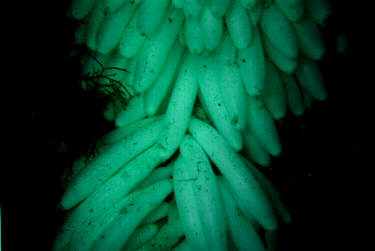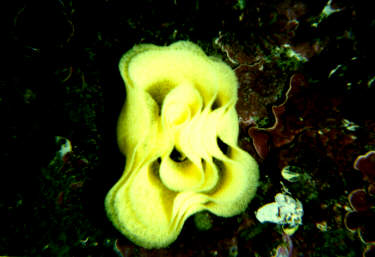
Your notes should look like this ...
1. C.
2. A.
3. B.
No? Stick with the stuff your mum taught you then.
The animals I was referring to were the elephant fish, the nudibranch (butterfly of the sea) and the cephalopod (literally head-foot in Latin) - in this case a squid. So, what were the pictures then?
1. 
These are squid eggs clustered on a weedy rock. Each egg is about 50 mm (2
inches) long. Squids are cephalopods - that is, they have a head and many feet but not a
lot else.
2. 
This thing is the egg case of an elephant fish. The egg stays in here and grows while the case is wafted around in the ocean. Eventually a baby elephant fish pops out. Divers occasionally find empty egg cases (such as this one) washed up in weed dumps along the coast.
3. 
This is a rosette of nudibranch eggs. I have seen them in yellow, white and mauve colours. Archidoris wellingtonensis, the warty nudibranch, laid yellow eggs for the Victoria University Marine Lab.
Now was that too devious? I suppose I really wanted to highlight some of the interesting things I had come across diving. You can bet that the person who tried to tell us that the brown thing had something to do with elephant's eggs, took a lot of ribbing. There were some stunned looks when she showed us a picture of an elephant fish with its egg case in her reference book.
About the smoke? Well, that was just corroborative detail to give an air of verisimilitude ...
Back to Improbable Eggs Sea Life On to Fact, Fiction or Fallacy